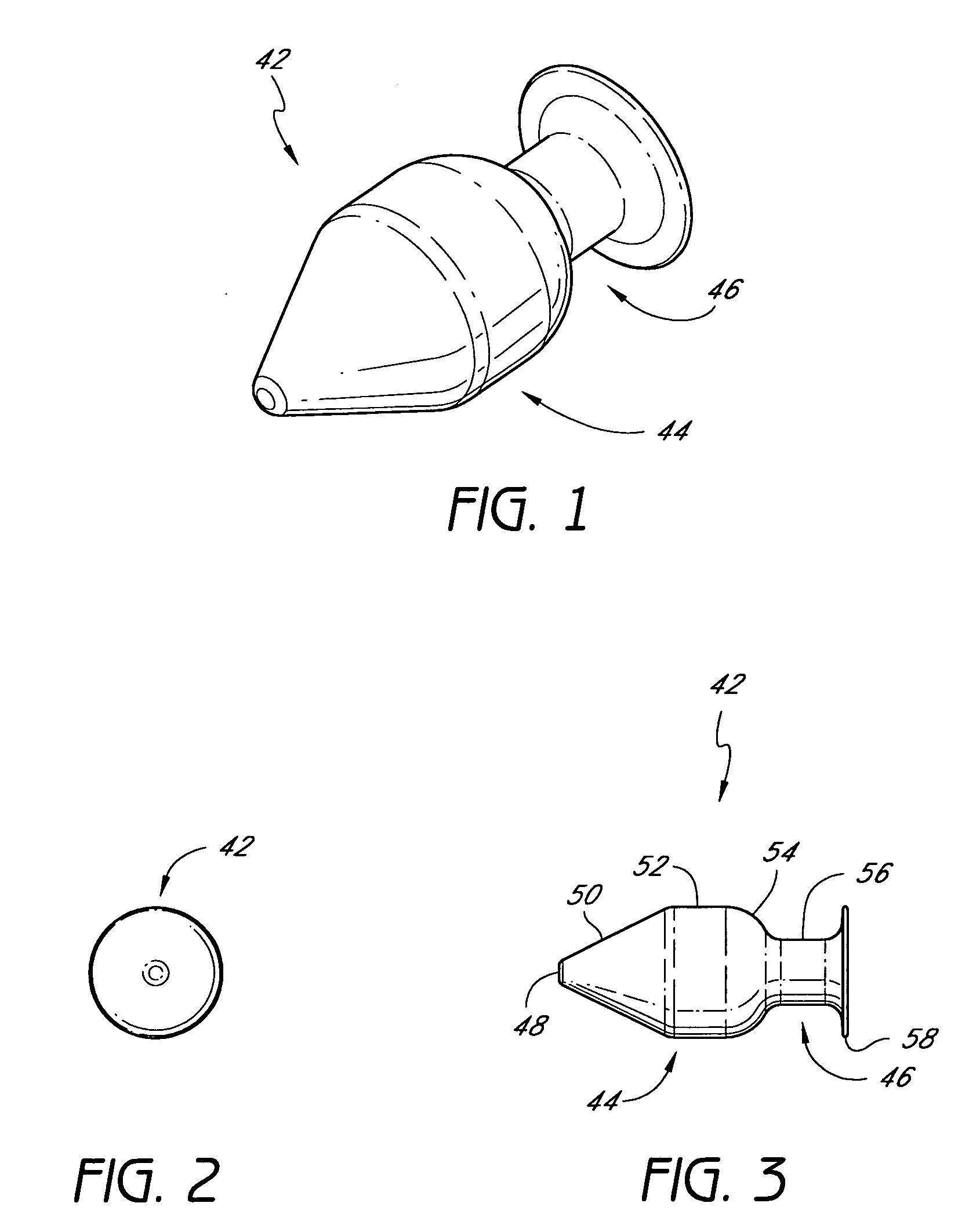Spinal implants and methods of providing dynamic stability to the spine
- Summary
- Abstract
- Description
- Claims
- Application Information
AI Technical Summary
Benefits of technology
Problems solved by technology
Method used
Image
Examples
Embodiment Construction
,” one will understand how the features of the preferred embodiments provide advantages, which include, inter alia, the capability to repair annular defects and stabilize adjacent motion segments of the spine without substantially diminishing the range of motion of the spine, simplicity of structure and implantation, and a low likelihood that the implant will migrate from the implantation site.
[0016] One embodiment of the present spinal implants and methods of providing dynamic stability to the spine comprises a spinal implant adapted to be implanted in an intervertebral disc located between a first vertebral disc and a second vertebral disc to repair an annular defect in the intervertebral disc, and to provide dynamic stability to a motion segment of a spine in the vicinity of the intervertebral disc. The implant comprises a head portion including at least a first head segment and a second head segment. Each of the first and second head segments has a length greater than zero as me...
PUM
 Login to View More
Login to View More Abstract
Description
Claims
Application Information
 Login to View More
Login to View More - R&D
- Intellectual Property
- Life Sciences
- Materials
- Tech Scout
- Unparalleled Data Quality
- Higher Quality Content
- 60% Fewer Hallucinations
Browse by: Latest US Patents, China's latest patents, Technical Efficacy Thesaurus, Application Domain, Technology Topic, Popular Technical Reports.
© 2025 PatSnap. All rights reserved.Legal|Privacy policy|Modern Slavery Act Transparency Statement|Sitemap|About US| Contact US: help@patsnap.com



